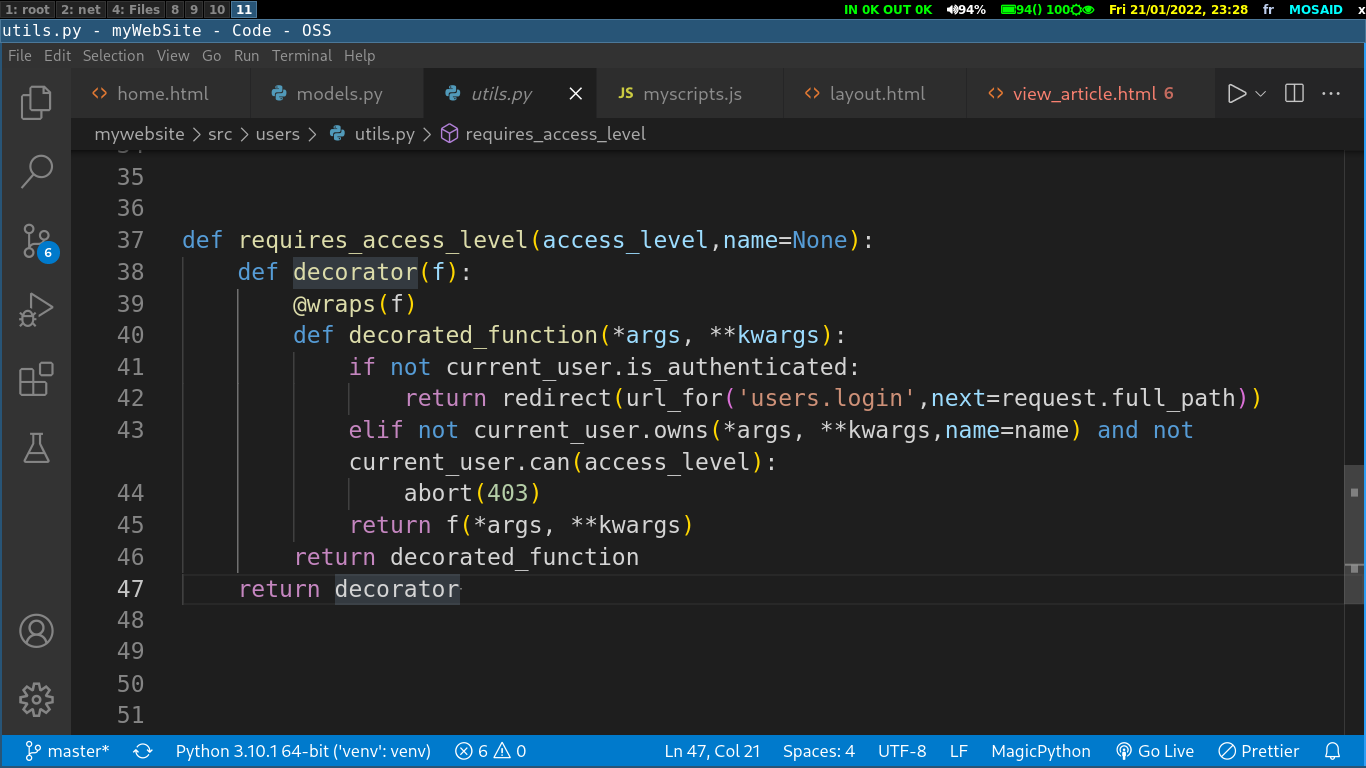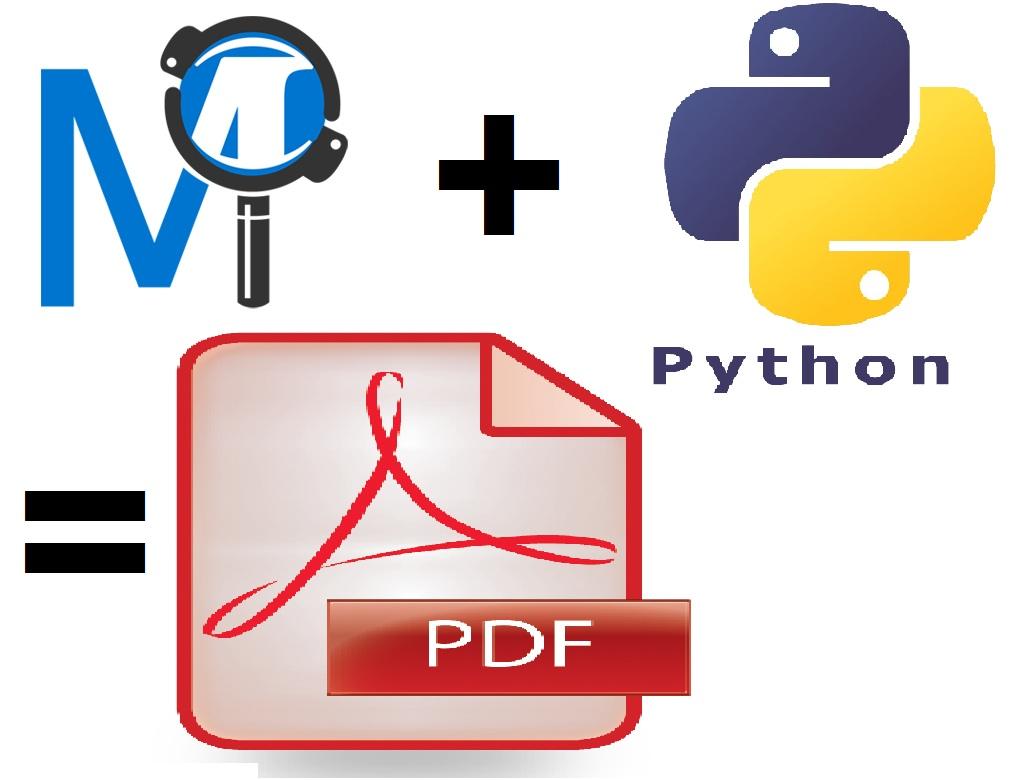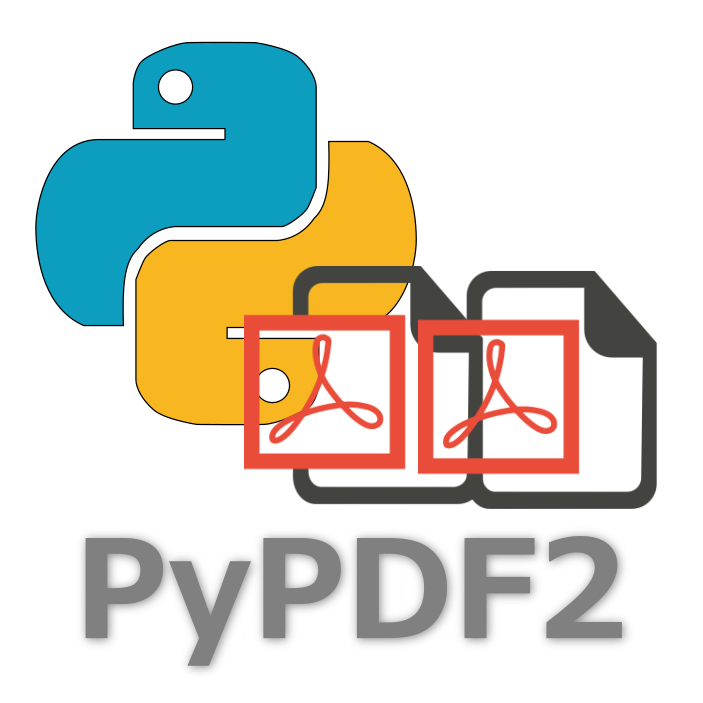In Python, functions are first-class objects, which means that they can be passed around like any other variable. Decorators use this feature to modify the behavior of functions or classes at runtime.
In essence, a decorator is a callable (i.e., a function or class) that takes another function or class as an argument and returns a modified version of that function or class. The original function or class is not changed in any way.
Here's an example of a simple decorator:
def my_decorator(func):
def wrapper():
print("Before function is called.")
func()
print("After function is called.")
return wrapper
@my_decorator
def say_hello():
print("Hello!")
say_hello()
Before function is called.
Hello!
After function is called.
In this example, my_decorator is a decorator function that takes another function func as an argument. It defines a new function wrapper that adds some behavior before and after the original function func is called. Finally, it returns the wrapper function.
The @my_decorator syntax is a shorthand for calling the my_decorator function with say_hello as an argument and reassigning say_hello to the returned function. This is equivalent to:
def say_hello():
print("Hello!")
say_hello = my_decorator(say_hello)
and here is a real life usage example of the decorators in a Flask application:
from functools import wraps
def requires_access_level(access_level,name=None):
def decorator(f):
@wraps(f)
def decorated_function(*args, **kwargs):
if not current_user.is_authenticated:
return redirect(url_for('users.login',next=request.full_path))
elif not current_user.owns(*args, **kwargs,name=name) and not current_user.can(access_level):
abort(403)
return f(*args, **kwargs)
return decorated_function
return decorator
The above code creates a decorator named requires_access_level which takes two arguments, the access_level and a name, the name represents the object to be accessed or modified. the decorator will wrap the function "f" passed to it as argument and return it as decorated_function. the @wraps(f) decorator is used to preserve the metadata of the original function f, such as its name and docstring, so that it is not overwritten by the metadata of the wrapper function.
The @wraps decorator from the Python built-in module functools is used to modify the behavior of a function or a method in a way that preserves the original function's metadata, such as its name, docstring, and signature. It is typically used in decorators to ensure that the wrapper function created by the decorator has the same metadata as the original function, making it easier to debug and introspect. The @wraps decorator takes a function as an argument and returns a new function that wraps the original function, preserving its metadata. It is a useful tool for creating decorators that modify the behavior of functions without losing important information about the original function.
The purpose of this decorator is to check if the current user has the required access level to access the decorated function. It does this by checking if the current user is authenticated, and if so, whether they have the required access level or they own a specific resource based on the *args and **kwargs passed to the decorated function. If the user does not have the required access level, the decorator raises a 403 Forbidden error.
The access_level parameter is used to specify the required access level for the decorated function. The name parameter is an optional parameter that can be used to specify the name of the resource that the user should own to access the decorated function. The name parameter is passed to the current_user.owns() method to check ownership
To use this decorator, you can apply it to a function that requires a certain access level like this:
@requires_access_level('admin', name='post')
def delete_post(post_id):
# delete the post with the given post_id
In this example, the delete_post function can only be accessed by authenticated users who have the admin access level or own the post resource with the given post_id


















0 Comments, latest